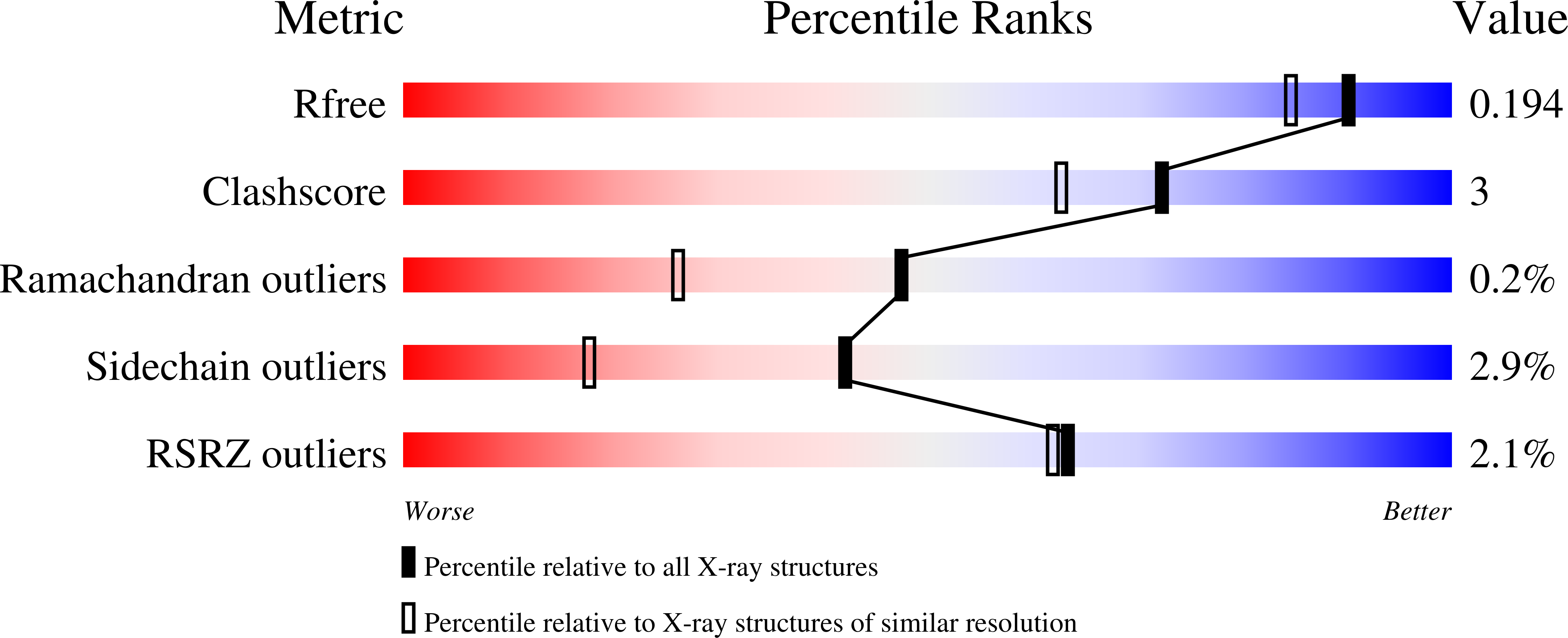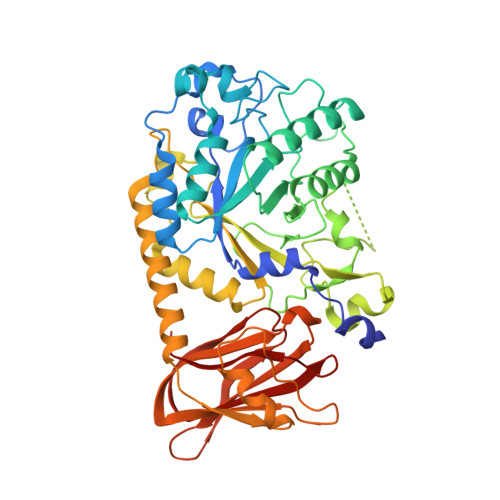1,3-1,4-alpha-L-fucosynthase that specifically introduces Lewis a/x antigens into type-1/2 chains
Sakurama, H., Fushinobu, S., Hidaka, M., Yoshida, E., Honda, Y., Ashida, H., Kitaoka, M., Kumagai, H., Yamamoto, K., Katayama, T.(2012) J Biological Chem 287: 16709-16719
- PubMed: 22451675
- DOI: https://doi.org/10.1074/jbc.M111.333781
- Primary Citation of Related Structures:
3UES, 3UET - PubMed Abstract:
α-L-fucosyl residues attached at the non-reducing ends of glycoconjugates constitute histo-blood group antigens Lewis (Le) and ABO and play fundamental roles in various biological processes. Therefore, establishing a method for synthesizing the antigens is important for functional glycomics studies. However, regiospecific synthesis of glycosyl linkages, especially α-L-fucosyl linkages, is quite difficult to control both by chemists and enzymologists. Here, we generated an α-L-fucosynthase that specifically introduces Le(a) and Le(x) antigens into the type-1 and type-2 chains, respectively; i.e. the enzyme specifically accepts the disaccharide structures (Galβ1-3/4GlcNAc) at the non-reducing ends and attaches a Fuc residue via an α-(1,4/3)-linkage to the GlcNAc. X-ray crystallographic studies revealed the structural basis of this strict regio- and acceptor specificity, which includes the induced fit movement of the catalytically important residues, and the difference between the active site structures of 1,3-1,4-α-L-fucosidase (EC 3.2.1.111) and α-L-fucosidase (EC 3.2.1.51) in glycoside hydrolase family 29. The glycosynthase developed in this study should serve as a potentially powerful tool to specifically introduce the Le(a/x) epitopes onto labile glycoconjugates including glycoproteins. Mining glycosidases with strict specificity may represent the most efficient route to the specific synthesis of glycosidic bonds.
Organizational Affiliation:
Research Institute for Bioresources and Biotechnology, Ishikawa Prefectural University, Nonoichi, Ishikawa 921-8836, Japan.





















